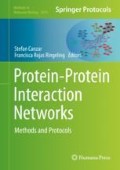Abstract
Identifying residue–residue contacts in protein–protein interactions or complex is crucial for understanding protein and cell functions. DCA (direct-coupling analysis) methods shed some light on this, but they need many sequence homologs to yield accurate prediction. Inspired by the success of our deep-learning method for intraprotein contact prediction, we have developed RaptorX-ComplexContact, a web server for interprotein residue–residue contact prediction. Given a pair of interacting protein sequences, RaptorX-ComplexContact first searches for their sequence homologs and builds two paired multiple sequence alignments (MSA) based on genomic distance and phylogeny information, respectively. Then, RaptorX-ComplexContact uses two deep convolutional residual neural networks (ResNet) to predict interprotein contacts from sequential features and coevolution information of paired MSAs. RaptorX-ComplexContact shall be useful for protein docking, protein–protein interaction prediction, and protein interaction network construction.
Access this chapter
Tax calculation will be finalised at checkout
Purchases are for personal use only
References
Jones S, Thornton JM (1996) Principles of protein-protein interactions. Proc Natl Acad Sci 93:13–20
Alberts B (1998) The cell as a collection of protein machines: preparing the next generation of molecular biologists. Cell 92:291–294
Lensink MF, Velankar S, Kryshtafovych A et al (2016) Prediction of homoprotein and heteroprotein complexes by protein docking and template-based modeling: a CASP-CAPRI experiment. Proteins 84:323–348
Lensink MF, Velankar S, Wodak SJ (2017) Modeling protein–protein and protein–peptide complexes: CAPRI 6th edition. Proteins 85:359–377
Kim DE, DiMaio F, Yu-Ruei Wang R et al (2014) One contact for every twelve residues allows robust and accurate topology-level protein structure modeling. Proteins 82:208–218
Wang S, Sun S, Li Z et al (2017) Accurate de novo prediction of protein contact map by ultra-deep learning model. PLoS Comput Biol 13:e1005324
Ovchinnikov S, Kamisetty H, Baker D (2014) Robust and accurate prediction of residue–residue interactions across protein interfaces using evolutionary information. elife 3:e02030
Hopf TA, Schärfe CP, Rodrigues JP et al (2014) Sequence co-evolution gives 3D contacts and structures of protein complexes. elife 3:e03430
Yu J, Andreani J, Ochsenbein F, Guerois R (2017) Lessons from (co-) evolution in the docking of proteins and peptides for CAPRI rounds 28–35. Proteins 85:378–390
Gromiha MM, Selvaraj S (2004) Inter-residue interactions in protein folding and stability. Prog Biophys Mol Biol 86:235–277
Jones DT, Buchan DW, Cozzetto D, Pontil M (2011) PSICOV: precise structural contact prediction using sparse inverse covariance estimation on large multiple sequence alignments. Bioinformatics 28:184–190
Marks DS, Hopf TA, Sander C (2012) Protein structure prediction from sequence variation. Nat Biotechnol 30:1072
Seemayer S, Gruber M, Söding J (2014) CCMpred—fast and precise prediction of protein residue–residue contacts from correlated mutations. Bioinformatics 30:3128–3130
Gueudré T, Baldassi C, Zamparo M et al (2016) Simultaneous identification of specifically interacting paralogs and interprotein contacts by direct coupling analysis. Proc Natl Acad Sci 113:12186–12191
Weigt M, White RA, Szurmant H et al (2009) Identification of direct residue contacts in protein–protein interaction by message passing. Proc Natl Acad Sci 106:67–72
Rodriguez-Rivas J, Marsili S, Juan D, Valencia A (2016) Conservation of coevolving protein interfaces bridges prokaryote–eukaryote homologies in the twilight zone. Proc Natl Acad Sci 113:15018–15023
Wang S, Li Z, Yu Y, Xu J (2017) Folding membrane proteins by deep transfer learning. Cell Syst 5:202–211.e3
Wang S, Sun S, Xu J (2018) Analysis of deep learning methods for blind protein contact prediction in CASP12. Proteins 86:67–77
Xu J (2018) Distance-based protein folding powered by deep learning. arXiv preprint arXiv:181103481
Remmert M, Biegert A, Hauser A, Söding J (2012) HHblits: lightning-fast iterative protein sequence searching by HMM-HMM alignment. Nat Methods 9:173
Feinauer C, Szurmant H, Weigt M, Pagnani A (2016) Inter-protein sequence co-evolution predicts known physical interactions in bacterial ribosomes and the Trp operon. PLoS One 11:e0149166
Federhen S (2011) The NCBI taxonomy database. Nucleic Acids Res 40:D136–D143
Zhou T, Wang S, Xu J (2017) Deep learning reveals many more inter-protein residue-residue contacts than direct coupling analysis. bioRxiv:240754
He K, Zhang X, Ren S, Sun J (2016) Deep residual learning for image recognition. In: Proceedings of the IEEE conference on computer vision and pattern recognition, pp 770–778
Wang S, Li W, Liu S, Xu J (2016) RaptorX-property: a web server for protein structure property prediction. Nucleic Acids Res 44:W430–W435
Zeng H, Wang S, Zhou T et al (2018) ComplexContact: a web server for inter-protein contact prediction using deep learning. Nucleic Acids Res 46(W1):W432–W437
Yachdav G, Wilzbach S, Rauscher B et al (2016) MSAViewer: interactive JavaScript visualization of multiple sequence alignments. Bioinformatics 32:3501–3503
Levy ED, Pereira-Leal JB, Chothia C, Teichmann SA (2006) 3D complex: a structural classification of protein complexes. PLoS Comput Biol 2:e155
Toogood HS, van Thiel A, Scrutton NS, Leys D (2005) Stabilisation of non-productive conformations underpins rapid electron transfer to ETF. J Biol Chem 280(34):30361–30366
Roberts DL, Frerman FE, Kim J-JP (1996) Three-dimensional structure of human electron transfer flavoprotein to 2.1-Å resolution. Proc Natl Acad Sci 93:14355–14360
Acknowledgments
This work was supported by National Institutes of Health grant R01GM089753 to JX and National Science Foundation grant DBI-1564955 to JX.
Author information
Authors and Affiliations
Editor information
Editors and Affiliations
Rights and permissions
Copyright information
© 2020 Springer Science+Business Media, LLC, part of Springer Nature
About this protocol
Cite this protocol
Jing, X., Zeng, H., Wang, S., Xu, J. (2020). A Web-Based Protocol for Interprotein Contact Prediction by Deep Learning. In: Canzar, S., Ringeling, F. (eds) Protein-Protein Interaction Networks. Methods in Molecular Biology, vol 2074. Humana, New York, NY. https://doi.org/10.1007/978-1-4939-9873-9_6
Download citation
DOI: https://doi.org/10.1007/978-1-4939-9873-9_6
Published:
Publisher Name: Humana, New York, NY
Print ISBN: 978-1-4939-9872-2
Online ISBN: 978-1-4939-9873-9
eBook Packages: Springer Protocols

